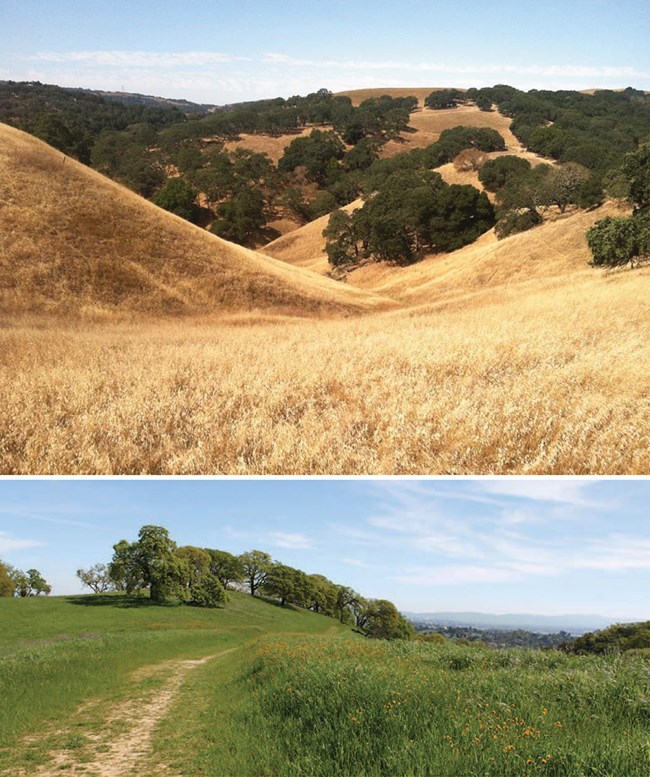Last updated: January 7, 2022
Article
New Geologic Resources Inventory Report Available for John Muir National Historic Site

Top: NPS / Martin and Denn (2017, figure 3)
Bottom: NPS / National Park Service (2015, p. 33)
John Muir was a glaciologist himself, the first to recognize and report that the “glaciers” in the Sierra Nevada were indeed glaciers—that is, moving bodies of ice, not simply stagnant snowfields. He referred to glaciers as “living” (Muir 1872a). Explore how geology forms the foundation of the landscape at John Muir National Historic Site and discover more connections between the man John Muir and geology with the newly-completed Geologic Resources Inventory report for John Muir National Historic Site.
The report describes how the Great Valley Sequence, the geologic formation underlying John Muir National Historic Site, formed over millions of years. The historic site’s geologic story began between about 145 million and 56 million years ago, when sediments that would become the site’s bedrock were deposited. Geologic processes such as plate tectonics and fluvial activity (the flowing of water) continue to alter the landscape to the present day.
The report also covers various aspects of the historic site's geology that are relevant for park management, including erosion, flooding, faults, and earthquakes. Download the report here.
Further Reading
- The Geologic Resources Inventory program is one of the 12 original ("1.0") natural resource inventories funded by the National Park Service Inventory & Monitoring program.
- All maps and reports are available for free on this publications page.
- Explore the geodiversity of the National Park System via the Geodiversity Atlas! The Atlas page for John Muir will be updated in the upcoming year.
